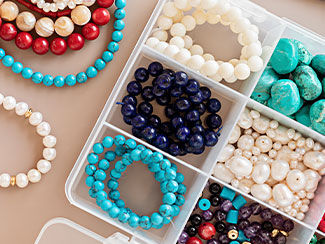Adularescence
The defining feature of moonstone, adularescence is the floating, misty shimmer of white or bluish light that can only be observed from certain angles. It has been described as looking at moonlight through clouds. A variety of schiller, adularescence is caused by diffused light reflecting from parallel columns of minerals inside a stone, which have a different refractive index from the stone itself.

























